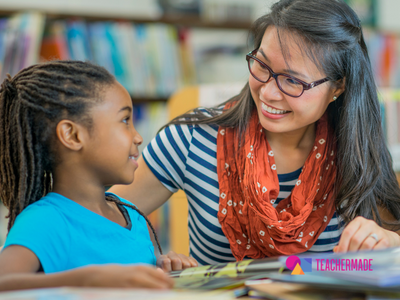Menu
Menu
Menu
Looking at student work goes beyond marking correct and incorrect answers. You get to look into how students are thinking and where they are in the learning process. But too often, teachers get bogged down with grading. You want to get the stack of student work off your desk and grade assignments for accuracy merely to check a box. You don’t connect with your student learning and cannot offer personalized feedback that is so helpful to students.
We’ve compiled resources to give more effective student feedback so that both students and teachers benefit from feedback. Read on to see how.

Effective feedback has a huge effect on the classroom. It creates a community that has more active involvement, and students become more intrinsically motivated over time. Here are the main components of effective student feedback:
Move beyond the typical “good luck” and raise your feedback to the gold star standard. Here are some tips to get your feedback to the effective stage:
Feedback should be small and frequent. Don’t overload your students. Focus on one thing at a time—tackle other issues in the next assignment or discussion.
We compiled examples and scripts to demonstrate how teachers can give more effective feedback in the classroom. Read more here.
Download our 20 Student Feedback Examples PDF to inspire a growth mindset in your classroom.
Giving timely, actionable feedback to each student is one of the best ways to raise student achievement. Give better feedback faster using TeacherMade.
In TeacherMade, you can give your students comments on their submissions, freehand draw on their work, add fun stickers, and so much more. Let’s dive into TeacherMade’s Review Submissions screen.
TeacherMade helps thousands of teachers give feedback on online assignments and assessments for students.
When you make the switch to online assignments giving student feedback becomes more effective. Our online teaching tool does the heavy lifting with grading for accuracy, so you can use your expertise to provide unique and specialized student feedback to the students that need it most.
We listen closely to our Teachers. That’s how we developed the most versatile and intuitive auto-scoring system you’ve ever used. And we include rich feedback features so our Teachers can directly impact student achievement.
Digital Grading 101: How To Use A Digital Worksheet Maker To Create Easy-To-Use Auto-Graded Assignments And Assessments
Are you feeling weighed down by the stack of grading you have? Free up nights and weekends by automating your grading in your classroom. We’ve come up with a guide to jumpstart your digital grading journey.
Dedicated teachers are working so hard and are beginning to burn out. There is an easier way to free up your time and still help the students who need your support. Here are some techniques to help teachers spend less time grading and still give students the quality education they deserve.
While learning loss does pose some serious challenges, there is good news! An effective formative assessment strategy and consistent feedback throughout the school year can help undo the effects of learning loss and set students on a trajectory for learning success.
Effective classroom teaching relies on educators being aware of the needs, achievements, and gaps in their students’ knowledge. Intervention, remediation, and acceleration are three tools teachers can use in their instruction when some students just aren’t getting it.
Self-paced learning or flipped classroom methods could be the solution you’re looking for in the classroom. These two approaches emphasize the student’s role in education and highlight the importance of the learner’s agency and responsibility throughout each learning experience.
Let’s look at self-paced learning, the flipped classroom, and how these two methods can breathe new life into your instructional practice.
Writing is one of the essential academic skills students of all ages need to practice and perfect. As a teacher, it’s important to be mindful when providing writing feedback for students. Writing can be a deeply personal exercise, and even constructive criticism could have incredibly negative repercussions if it is not carefully curated based on the student receiving it.
After all, the ultimate goal in teaching is for our students to learn and grow. Therefore, we must always remain mindful and aware of this objective, even when stacks of papers are ready for review. To help, here are some tips to provide great feedback for your students.
Multimodal learning refers to the process of integrating information from multiple sources or sensory channels, such as text, images, audio, video, and gestures, to enhance learning and understanding. It recognizes that different modalities provide unique and complementary information, and leveraging these multiple sources can lead to more comprehensive and effective learning experiences.
With classroom grading, it seems like students and teachers can’t win. But multimodal feedback strategies bring a new solution to student feedback.
You’ve just sat through another PD about the latest craze: multimodal learning. You’re feeling a little jaded because it sounds like the education world is just repackaging the same learning styles fad of yesteryear.
But while similar, learning styles and multimodal learning do have their own unique differences. The learning styles movement had limitations, and multimodal instruction aims to address those. Additionally, multimodal learning incorporates technology in the classroom so that you can actually cater to your diverse student population.
Find out what makes multimodal learning different from learning styles.
You may have tried doing learning style inventories with your students so that students can see what learning styles work best. But are you actually employing different learning modes inside of your classroom? Or maybe you’d like to mix it up, but it feels like you may have to reinvent your entire classroom routine.
The good news is you can add multimodal learning in small ways throughout your week. We’ve rounded 25 examples of Multimodal Learning to use in your classroom today.
Learn how Rachelle gives feedback to her students using TeacherMade.
© 2024 All Rights Reserved.